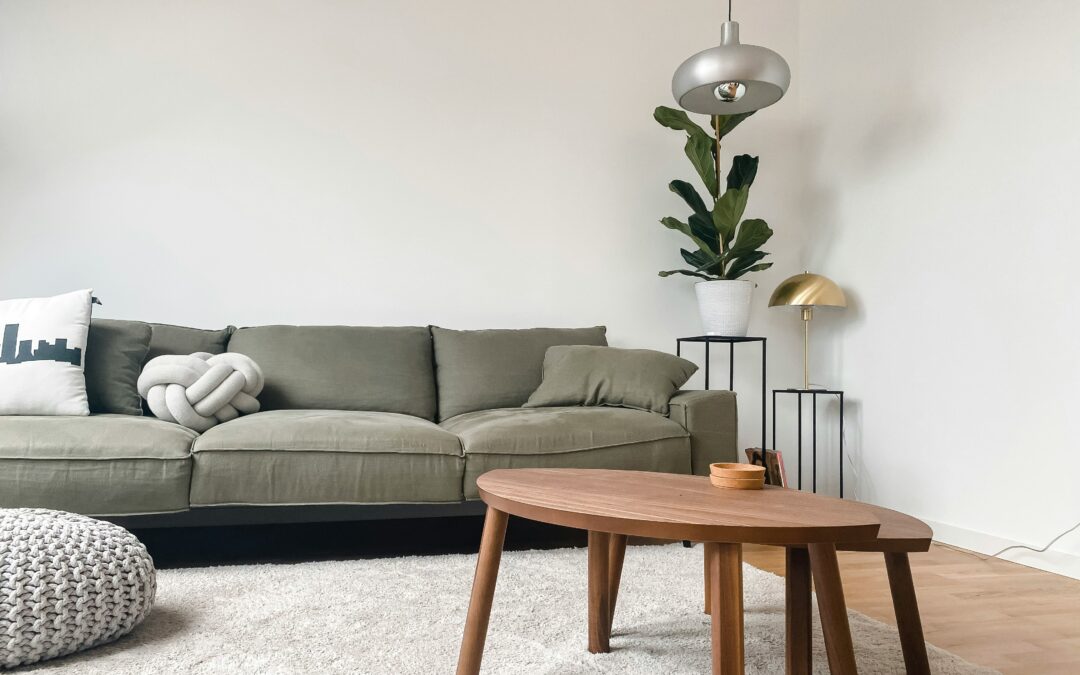Real Estate Matters
As you embrace and enjoy everything your home has to offer, why wait to give your home a cozy makeover? The simplistic and minimalistic design trend called Japandi combines the comfort of Scandinavian hygge with the minimalism of Japanese design for a stunning look. Let’s discover how you can achieve this style in your home.
Japan and Scandinavia are at opposite ends of the world, so you might not expect them to have many commonalities. However, they share a deep love for their homes and regard them as important places. While their design styles differ at the core, their countries’ design aesthetics are the perfect combination of comfort and simplicity.
In America, people often use the word “cozy” to describe design that emphasizes comfort. It’s a compliment in American culture, but for Danes, it’s an integral part of their lifestyle known as “hygge” (pronounced hoo-gah).
Hygge and Wabi-Sabi Meet
Hygge became popular in the 1950s alongside the modernist movement in Europe and America, but while modernism emphasized simplicity and function, hygge reflected an appreciation for comfort, warmth and everyday well-being within the home.
Not only do Danes champion comfort, they also honor minimalism and togetherness when designing a space. Their design aesthetic is characterized by clean lines, light colors and minimal furniture.
About 5,000 miles away, Japanese people use the term “wabi-sabi” to reflect their belief that there is beauty in imperfection. The phrase means they embrace what people from Western culture may deem quirky and inconvenient in the home.
Japanese design elements include sleek, rich colors and handmade pieces crafted from natural materials. Japan’s gorgeous cherry blossoms and flowing rivers between mountain ranges are reflected in the country’s home art pieces and décor, which honor the land they live on and bring them closer to nature.
The best of Scandinavian and Japanese influences are merged harmoniously to create Japandi – simplicity and functionality infused with natural richness and uniqueness.
The Principles of Japandi
Hygge and wabi-sabi are great on their own, but the blend of the two is an appealing mix. Some may find Scandinavian design inviting for its coziness and minimalism, while others may find Japanese design serene and beautiful. Japandi attracts many who want to adopt the best of both, which can be achieved by following these principles:
Love and Need Everything
You should wholly love and need something to use it in your Japandi design. There are no rules about what you can and can’t include, just make sure it serves a purpose for your living space’s functionality.
Everything, from your furniture to your utensils, should be high quality. This principle goes hand in hand with loving everything that you own. If you love an item, you should use it until it is no longer usable instead of routinely changing out or buying new items. What constitutes high quality is up to you, as it’s relative to your needs.
Respect and Honor the Earth
Giving back to the Earth is a big part of Japandi. The style encourages you to consider that you live in an area that was once unspoiled nature. Japandi honors nature by promoting sustainable, natural materials, and incorporating colors and décor that match the natural world.
Embrace Imperfections
Not every piece in your home will be perfect, nor should it be. Every piece represents a part of your life, whether it’s furniture with coffee or paint stains or handmade bowls or vases with imperfections. To fully adopt Japandi, throw away any belief that perfection is required.
Japandi in Your Home
The beauty of Japandi is that you can choose which elements you like from Japan, which you prefer from Scandinavia and adjust accordingly. There is no one-size-fits-all approach to Japandi design, however, these tips can guide you in successfully creating your Japandi-inspired space.
Choose Handmade
Handmade pieces are a Japandi favorite. When you opt for handmade furniture and art, choose to allow unique, well-made and sometimes perfectly imperfect pieces into your home. This helps support artists and their craftsmanship. Find handmade décor for your home that promotes independent artists and creators.
Keep Your Home Simple
Avoid overcrowding walls with décor and choosing furniture that leaves little space to move around in your living areas. Stick to simple, practical and intentionally arranged furniture. There should be no need to step around or over anything.
Ask yourself, “Does this spark joy?” If not, you are making your home too complex. Choose items that bring joy and simplicity will follow. A good rule of thumb is to look at a piece, and if you think about it more after you’ve left the store or website, revisit and purchase it. If you’ve forgotten about it or hesitate, it’s best to leave it be.
Pick Basic Shapes
The shapes in your home will set the tone for Japandi, and while you can’t do much to change your home’s structure, you do have control over the shapes placed inside it.
Choose shapes without complicated structures and designs, like solid circles and squares that are uncomplicated but elegant. For instance, when choosing chairs, select those with solid backs instead of chairs with detailed or busy patterns.
Stick to Natural Materials
Not only do natural materials last longer, they are also key to honoring the Earth in your Japandi home design. Choose furniture made of reclaimed wood, wicker, bamboo and other sturdy, natural materials. Pick items made with 100 percent cotton, hemp, or linen for upholstery and bedding. One trick is to pick outdoor furniture pieces that can also work inside, as most outdoor furniture is composed of natural materials to withstand the elements.
Use Warm Neutrals and Muted Colors
A central point in Japandi is creating a minimalist home without it feeling cold. Loud, bold colors and stark whites have the opposite effect, so choose muted tones. The Japandi color palette is where Japanese inspiration shows most – using warm neutrals and muted earth hues. If you want a pop of color, use soft shades of pink, blue and green and avoid dark colors as much as possible.
With hugs, love and warm regards.
For More Real Estate Questions, Information and Advice Contact Elisa Jo Eagan “The Real Estate Godmother” (609)703-0432 and Remember…”There’s No Place Like Owning Your Own Home!”
















